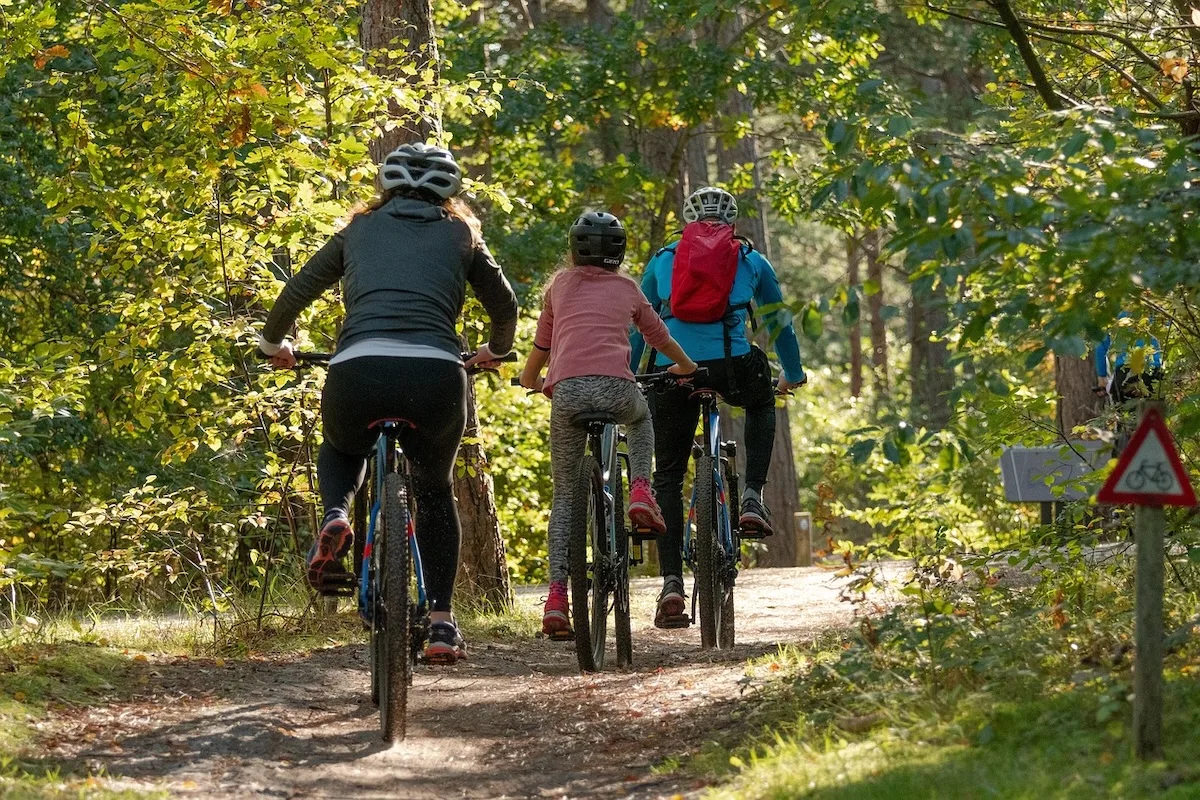Outdoor summer vacations are some of the easiest ones to plan with kids. Whether you’re at the beach, a lake house or a national park, the entertainment is built in to the destination. They’re relatively inexpensive and can be adapted for a wide age range. But in the age of climate change, Zika and widespread allergies and asthma, it’s important to keep your tots, kids and teens healthy in the outdoors.
You can empower your kids to look after themselves by teaching them some essentials for outdoor safety, health and wellness and giving them good prevention tools.
Here are my best tips for ensuring your young people stay healthy and protected, no matter where your outdoor travels take you.
You might also want to read
• My Tips For Keeping Kids Well Fed on Vacation
• My Safe Road-Trip Check List
• My 33 Safe Travel Tips from Security Pros
Keep Kids Healthy On Outdoor Summer Vacations: 4 Smart Steps
Tip #1: Keep Kids’ Immune Systems Robust on Outdoor Vacations
Travel — with its flights and long drives, busy days and unhealthy eating — can take a toll on our immune systems. If anyone on my flight has strep throat or a virus, those germs will absolutely find me. I always do what I can to keep my own and my family’s immune systems robust while we’re away from home — to the extent they let me.
The gateway for germs is your sinuses, which dry out and become vulnerable in hot, dry climates, as well as airplanes and overly hot or heavily air-conditioned hotel rooms.
Keeping your sinuses healthy goes a long way toward preventing infections. I often carry saline sprays or drops with me to moisten those nasal passages and help keep irritants and germs at bay.

Staying hydrated, getting enough sleep, and slipping some fruits and vegetables into your meals as much as you can all help to keep your family’s immune system working well.
I almost always travel with a mini first-aid kit with a painkiller, medication for colds, sore-throat and gastric ailments, antibiotic ointment and bandages. For outdoor and hot-weather vacations, I pack rehydration tablets, and mole skin for blisters.
This lets us deal with minor ailments quickly and easily, without having to worry about finding a pharmacy when we’re away from any big towns.
Sometimes I add essential oils, such as eucalyptus, peppermint or lavender to that first-aid kit. They can clear nasal passages, ease nausea and help us to relax. They’re usually harmless, but it doesn’t hurt to consult your pediatrician before trying them.
Tip #2: Keep Your Guard Up Against Allergies And Asthma
Hay fever can quickly put the kibosh on outdoor vacation fun. Sometimes it can surprise you when you’re away from home, say if it’s not your usual hay-fever season or if your kids aren’t bothered at home.
If you suspect your kids are suffering from local pollen allergies you can check the pollen count and air quality index before heading outdoors.
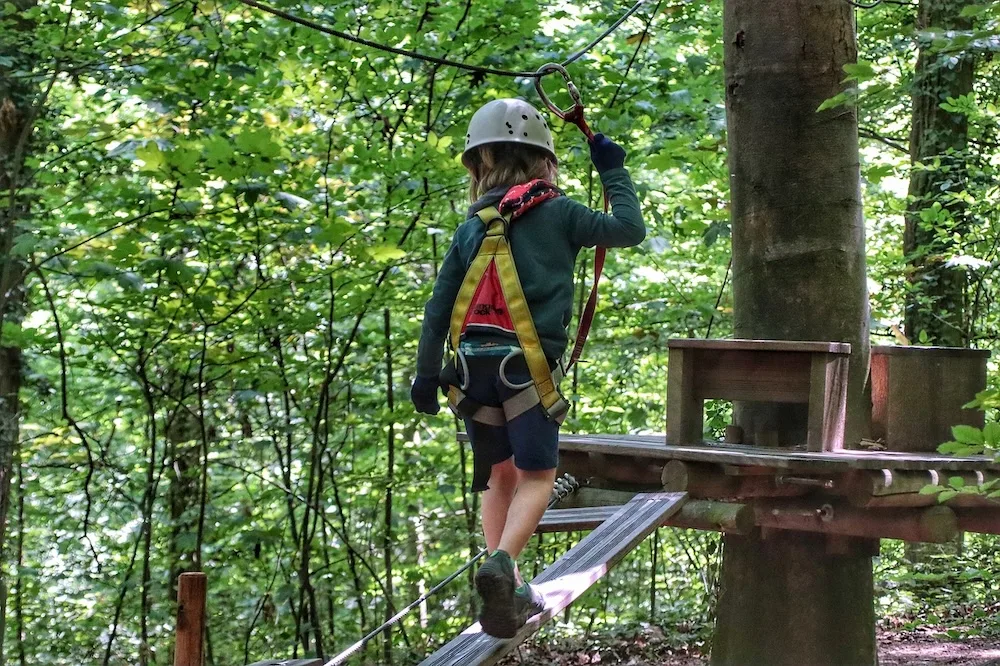
Encourage your kids to wear sunglasses and hats, which can shield their eyes from airborne allergens. Changing clothes and showering when they come back indoors can help to keep the allergens outside.
Keeping windows closed and sticking to air conditioning on high pollen days can also keep outdoor allergens at bay.
Add a non-drowsy allergy medicine or a natural allergy or congestion remedy to your first-aid kit, too. You might have to try a few to see which does the trick for your kids.
If kids suffer from asthma it can be useful to check in with their allergist or pediatrician before an outdoor vacation, to see if you need to tweak their care plan. And it doesn’t hurt to remind them to pack their inhaler in their backpack.
Tip #3: Prevent & Treat Outdoor Bug Bites
Bug bites and stings are annoying and make us itchy. More than that though, they can sometimes lead to skin infections, allergic reactions or diseases from Lyme Disease to Zika.
EPA-registered insect repellents are the first line of defense against outdoor pests. When you’re applying them to younger kids, try to avoiding their hands, which always find their way into eyes and mouths minutes after you’re done.
Light-colored, long-sleeved shirts and pants make it harder for insects to get to you. Avoiding highly scented soaps and shampoos helps, too.
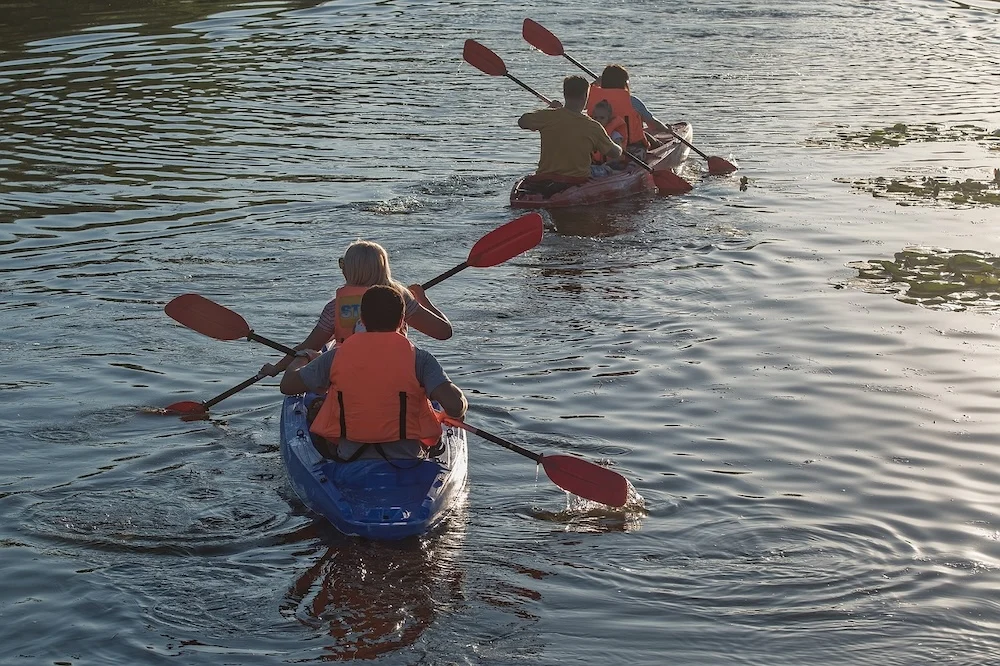
Heading indoors at dusk and dawn — peak insect-activity time — can be helpful if mosquitoes really like your family.
Staying out of long grass and brush is important in areas with large tick populations. Evening tick checks are a good idea, too.
Teach kids to avoid provoking insects that bite or sting (I know, easier said than done, but try).
Kids should also know how to treat a bite: Cleaning it promptly with soap and water, rubbing alcohol or iodine can help reduce itchiness and wash away disease-carrying germs lingering. A cold pack can reduce swelling.
An anti-itch cream or Calendula can help calm the itch and redness of bug bites and minor stings, as well as from plants and leaves that can cause a reaction.
If you or your kids receive a tick bite, keep the tick so a doctor can tell you if it’s a disease-carrying variety. Put it in a Ziploc bag, ideally in the freezer. If you can’t keep it, take a photo.
Tip #4: Protect Kids Against Sun Damage
Every family needs protection against sunburn, sun stroke and skin cancer. I’m a huge proponent of reef-safe water-and-sweat resistant sunscreen.
Look for at least SPF 30 to counter UVA and UVB rays. For little kids, faces and any full-day exposure I recommend going for SPF 45 or 50. Reapply periodically if you’re out all day, on the water or very active.
There are also lots of options for sun-protective clothing, from wide-brimmed hats, and sunglasses with UV protection. It’s not hard to find clothes with built-in UV filters in sporting goods stores.
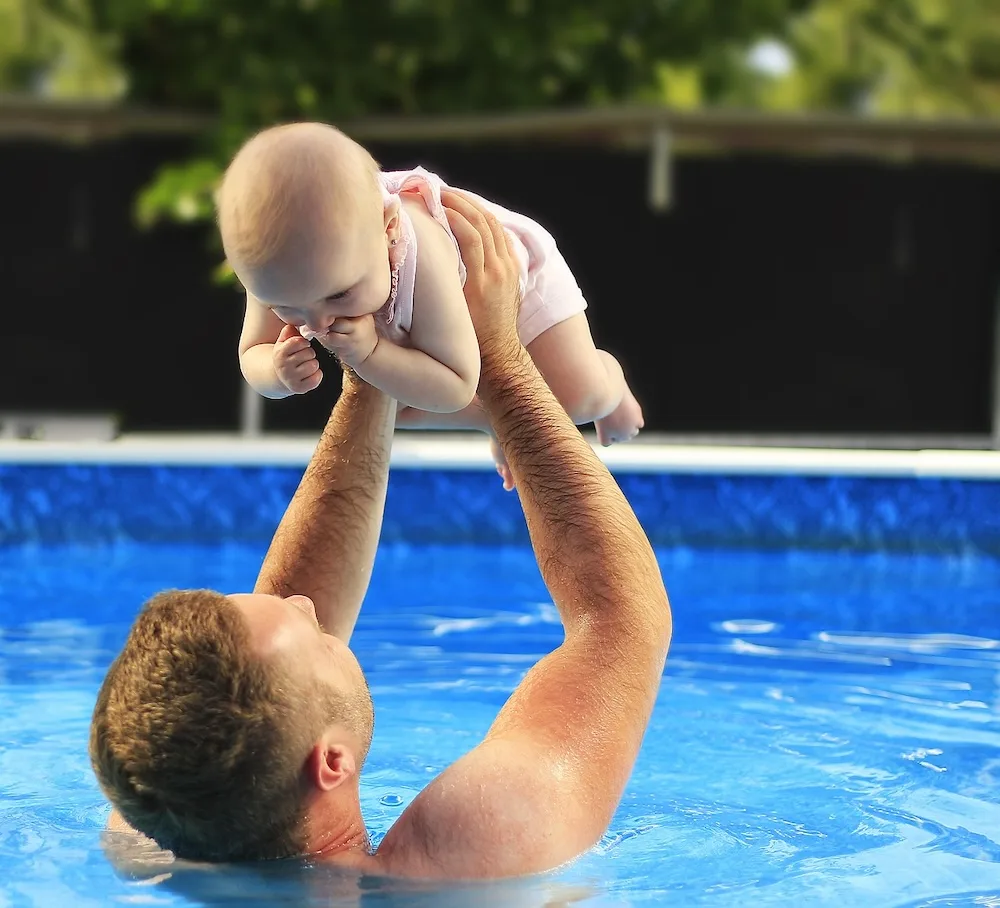
Sunscreen, hats and the right clothing can protect against heat or sun stroke, too.
High sun intensity stretches from about 10 a.m. to 4 p.m. But to find that peak hour wherever you are, you and your kids can follow the shadow rule: When your shadow is shorter than you, the sun’s rays are at their strongest.
If you’re having fun outdoors in a destination that’s very sunny and/or hot, it’s wise to head inside sometime between 12:00 and 2:00 p.m. to have lunch, take a nap, or just chill out a bit.
Remember, too, that UV rays can penetrate clouds. I’ve gotten some of my worst burns on overcast days, particularly in tropical and desert climates.
The same goes for winter vacations, too. The sun reflects off the snow the way it does off of water and it’s quite possible to get a sunburn while skiing and snowboarding.
When you or your kids do get sunburned, try aloe gel or calendula
This is a lot to keep in mind when you’re supposed to be out having fun with your kids. But a holistic approach to outdoor health will keep the whole family happy while you nurture your kids’ curiosity and love of outdoor adventures. It’s laying the foundation for a lifetime of healthy, active outdoor travel.
Pin it for later!
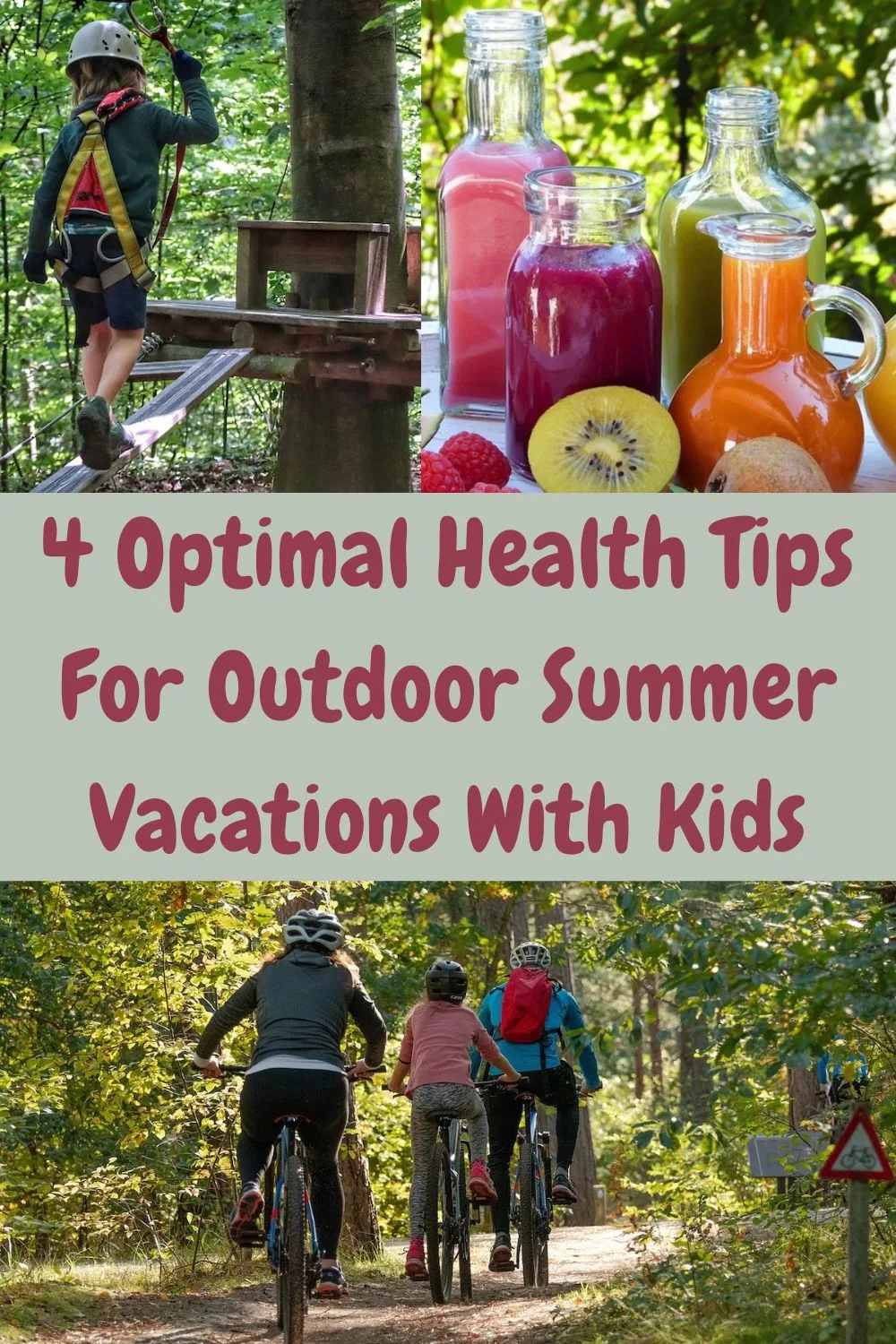
This post is brought to you by NatPat. All the opinions expressed and original reporting is my own.
Photos: Bikes (Sabine van Erp), Smoothies (Silvia), Adventure Park (Thomas G), Kayaking ( Юрий Муханов) and Baby in Pool (947051), all via Pixabay.

